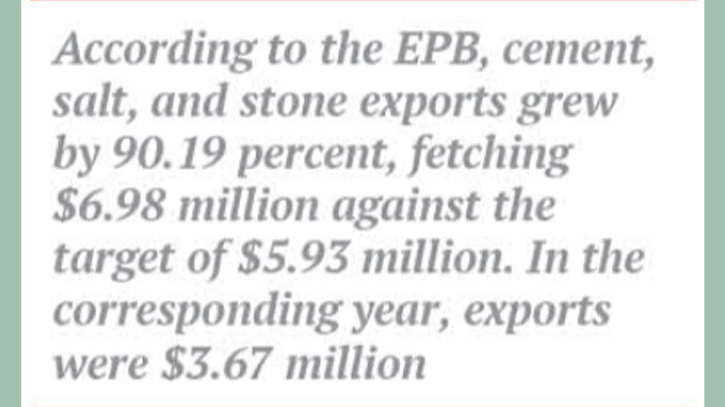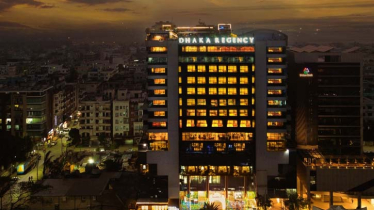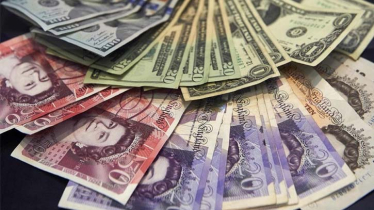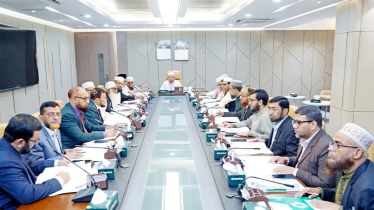
Photo : Messenger
The export of traditional products is on a consistent decline, contrasting with the continuous rise in the export of non-traditional items. From July to November, there was a remarkable 90 percent growth in the exports of cement, salt, and stone.
According to the Export Promotion Bureau (EPB), cement, salt, and stone exports grew by 90.19 percent, fetching $6.98 million against the target of $5.93 million. In the corresponding year, exports were $3.67 million.
Shankar Kumar Roy, Executive Director of the Bangladesh Cement Manufacturers Association (BCMA), told the Daily Messenger, “There is no reason for the rise in cement exports. Stone exports have risen significantly. Besides, cement prices are lower in India than in Bangladesh.”
Data shows that slag and ash exports rose by 26.25 percent to $19.48 million, petroleum by-products by 0.40 percent to $7.52 million, and chemical products by 11.21 percent to $140.35 million. In the corresponding year, slag and ash exports rose to $15.43 million, petroleum by-products to $7.49 million, and chemical products to $126.2 million.
Plastic products exports increased by 14.90 percent, paper products by 51.42 percent, printed material by 42.31 percent, and tea exports by 50 percent.
On the other hand, during the mentioned period, garment exports declined by 7.45 percent, leather and leather goods declined by 20.55 percent, and frozen fish declined by 15.88 percent.
Khondaker Golam Moazzem, research director of the Centre for Policy Dialogue (CPD), said, “The war situation is getting calm, and we hope that the economy will turn to a positive tone. Although exports are experiencing a regular fall, it will be a challenge for the sector to meet the economic crisis.”
“Demand for Bangladesh’s plastic is rising in the global market day by day. Though we are not satisfied with the export, this amount is not bad in the dull market,” Joshim Uddin, Vice Chairman of Bengal Group of Industries, told The Daily Messenger.
“As our big markets are China and Japan, our market is less affected by the war than the EU and USA. That has resulted in the export of plastic growing even in adverse economic situations,” he added.
He said that the potential sector needs the policy support of the government. If the sector gets a subsidy, it might grow like RMG.
Meanwhile, the country's plastic manufacturers have set a new target of securing a 3 percent share of the $570 billion global market by 2030.
Faruque Hassan, President of Bangladesh Garment Manufacturers and Exporters Association, said, “To curb inflation, advanced economies increased bank interest rates, limiting the purchasing power of consumers and demand for goods. The ongoing Israel-Hamas war has added further fuel to the crisis. Our analysis suggests that the year 2023 will not be able to sustain the trade level of 2022. There will be some decline in apparel trade in 2023, and we will have to face the heat of it to some extent.”
Nevertheless, the ongoing labour unrest, allegedly sparked around minimum wage issues, has seriously interrupted the industry and export for the past one week. This has led to such a decline in export in October. While the minimum wage review is under process and the Minimum Wage Board is working within its given time, such violent protests are unfortunate, and this affects the activities of the wage board.
Messenger/Disha








